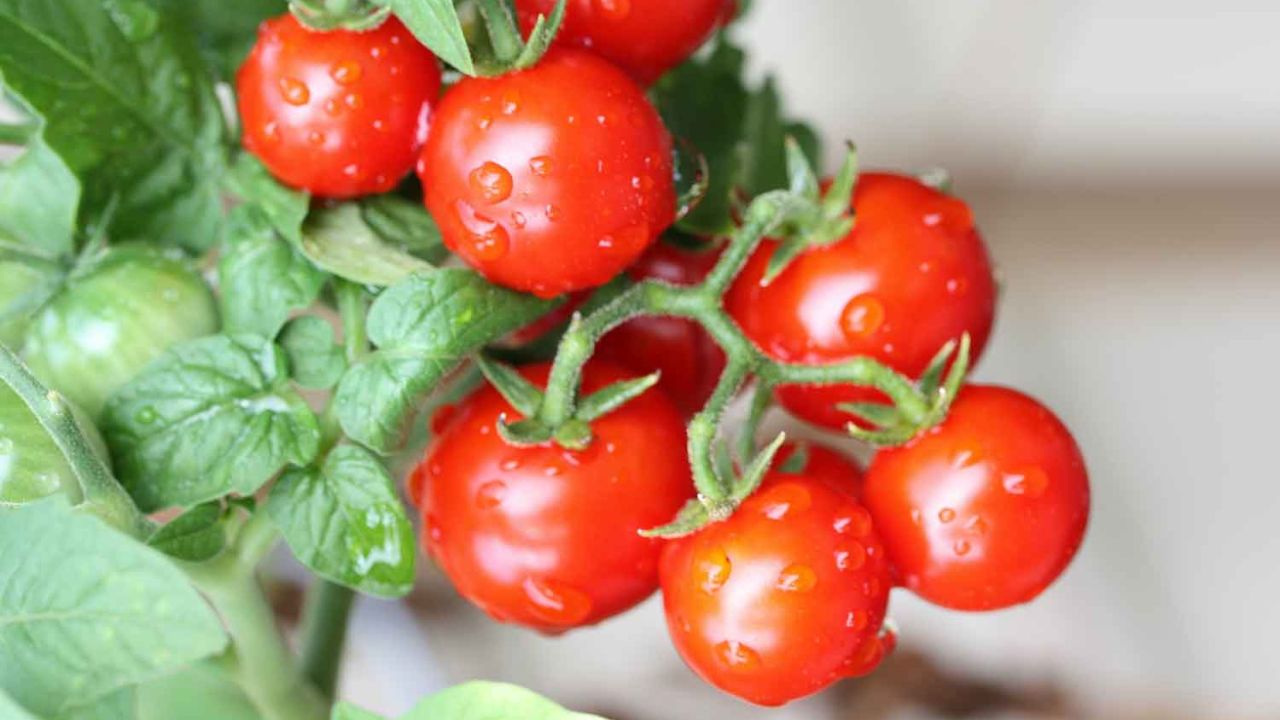When it comes to growing tomatoes, understanding the difference between determinate and indeterminate varieties is crucial for planning your garden. Each type has its own growth habits, fruit production patterns, and care requirements, making them suitable for different gardening styles and spaces.
Determinate vs. Indeterminate Tomato Plants: The Basics:
Determinate tomatoes are bush-type plants that grow to a certain height and then stop. They tend to set and ripen all their fruit at once, making them ideal for canning or making sauces. Indeterminate tomatoes, on the other hand, are vine-type plants that continue to grow and produce fruit throughout the growing season until killed by frost.
How to Tell the Difference Between Determinate and Indeterminate Tomatoes?
Terminal End:
- Determinate: The terminal (or growing) end of the plant sets flowers and fruit. Once this happens, growth ceases.
- Indeterminate: The terminal end continues to grow and produce flowers and fruit continuously.
Growth Habits:
- Determinate: Typically shorter, bushier, and more compact, reaching a height of 3-4 feet.
- Indeterminate: Taller and sprawling, often reaching heights of 6 feet or more, requiring staking or cages for support.
Fruit Production:
- Determinate: Produces fruit in a concentrated time frame, often within a few weeks.
- Indeterminate: Produces fruit gradually over the season, allowing for a continuous harvest.
Size and Space:
- Determinate: Requires less space and is suitable for container gardening or small gardens.
- Indeterminate: Needs more space and support due to its sprawling growth habit.
Advantages of Growing Determinate Tomatoes:
- Easier to Manage: Compact growth makes them easier to care for and harvest.
- Uniform Harvest: Ideal for gardeners who want to can or process tomatoes all at once.
- Less Pruning Required: Generally require less maintenance in terms of pruning and staking.
Advantages of Growing Indeterminate Tomatoes:
- Extended Harvest: Provides fresh tomatoes throughout the season, ideal for fresh eating.
- Diverse Varieties: Often available in a wider variety of types, sizes, and flavors.
- Better Yield Over Time: Can produce more fruit overall since they continue to grow and set fruit.
What are a Few Examples of Determinate Varieties?
- Celebrity: A versatile variety known for its disease resistance and excellent flavor.
- Roma: Ideal for sauces and canning, with a meaty texture.
- Bush Early Girl: Quick to produce and great for small spaces.
Choosing the Right Variety for Your Garden:
When selecting tomato varieties, consider your gardening space, the desired harvest timeline, and your culinary needs. For limited space or if you prefer a quick harvest for canning, go with determinate varieties. If you have more space and want a steady supply of fresh tomatoes throughout the summer, opt for indeterminate types.
FAQs:
Can I grow both determinate and indeterminate tomatoes together?
Yes, many gardeners choose to grow both to enjoy the benefits of each.
How can I support indeterminate tomatoes?
Use cages, stakes, or trellises to keep the plants upright and facilitate airflow.
Do determinate tomatoes need pruning?
Minimal pruning is needed, mainly to remove suckers that grow at the leaf joints.
Are indeterminate tomatoes better for beginners?
Not necessarily; both types can be suitable for beginners, depending on their gardening goals.
Conclusion
Understanding the differences between determinate and indeterminate tomato plants can significantly impact your gardening success. By choosing the right type based on your space, growing preferences, and harvest goals, you can enjoy a bountiful and delicious tomato harvest all season long!





